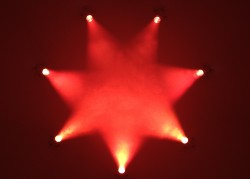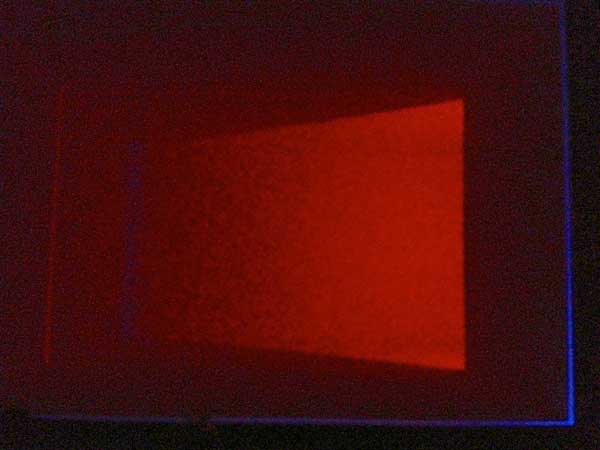Light can transform space and alter perception. Experience is the ground for testing psychological reflexes to light and colour.
Light has always been a central theme in art, but during the 60′s artists started to manipulate light and use it as a material. Doug Wheeler, Dan Flavin and James Turrell were pioneers and have their works featured at the exhibition Light Show at the Hayward Gallery in London’s Southbank Centre until the 23rd of April.
They opened way to a new generation of illuminated artists such as native Conrad Shawcross that presents a metallic cube with a geometrically designed net as its surface, projecting lights all around the room with a moving lamp on its inside. A hypnotic but at the same time very insightful experience based on Plato’s Cave Theory that proclaims we see shadows as reality. The exhibition exposes vision as our least reliable sense showing us that what we see is not always what is there.
James Turrell’s installation was sublime. He created spaces with light, structures that didn’t really exist materially but that were there, showing us that light can take us to different realms, into spaces beyond. Olafur Eliasson’s Model for a Timeless Garden (2011) was the best in my opinion. With a strobe light to illuminate flowing streams of water he uses principles of photography and appears to freeze the droplets in air. With his mixture of science and enchantment he creates a dream world where water becomes solid sculptures.
The show is magical and at the same time revealing. It uncovers how we see the world in a relative way. It all depends on how we look. The way we give light to things makes us see them in a certain way. It all depends on the perspective you are looking. Like in Jim Campbell Exploded View (2011) that reveals shadows in what seems to be random blinking lights, but if you stand at the right point you see the shadows as moving figures. It proved how our eyes can fool us and if we depend on them to create our reality then reality is not true.





